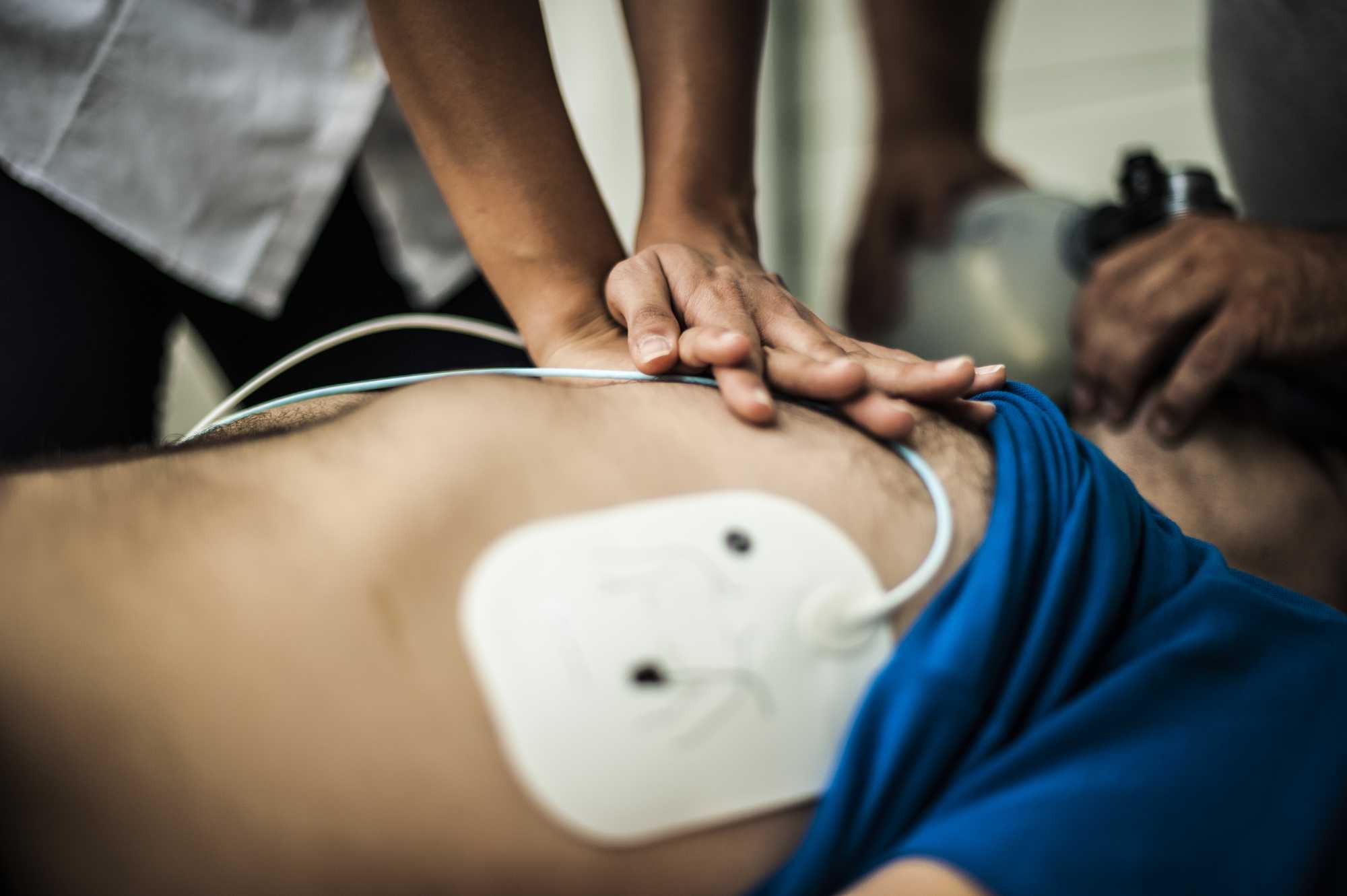on
BY SIMONE J. SMITH
Quebec actor, singer and director Robert Marien was playing hockey at a local arena, when he suddenly collapsed on the ice. He was fortunate that his teammates and others at the arena recognized what was happening and knew what to do: they called 9-1-1 immediately, started CPR and got an AED. “I was so lucky! Everything was in place to save my life. I am extremely grateful for that chain of survival,” says Robert. He now advocates for increasing public access to defibrillation. “It is simple,” he says. “AEDs should be as common as fire extinguishers.”
In 2012, Kim Ruether’s 16-year-old son, Brock, collapsed from cardiac arrest during volleyball practice at his school in Fairview, Alta. An AED was brought out, but no one was instructed to use it and Brock died. This tragedy inspired Kim to become a passionate advocate; she founded the Project Brock Society, with the goal of ensuring every school in Alberta is equipped with an AED and people are trained and prepared to take action. “If we train kids to do CPR and use AEDs, then we would have a whole citizenry trained. Kids have fire drills and lockdown drills; we need to do the same for emergency medical situations like cardiac arrest.”
Community, I have a question for you; Do you know what to do if you witnessed a loved one having a heart attack?”
According to a new report from Heart & Stroke, the number of cardiac arrests in Canada is significantly larger than previously estimated. The report “Every Second Counts: Transforming Resuscitation to Restart more Hearts,” reveals that approximately 60,000 out-of-hospital cardiac arrests are happening in Canada each year – that is one every nine minutes. Unfortunately, only one in 10 people who experience a cardiac arrest out of hospital survive. The new data also indicates that nearly half of cardiac arrests happen to people under the age of 65.
In an article title, “Race, Racism, and Cardiovascular Health: Applying a Social Determinants of Health Framework to Racial/Ethnic Disparities in Cardiovascular Disease,” researchers highlight the fact that disparities in cardiovascular disease (CVD)—the leading cause of morbidity and mortality globally are one of the starkest reminders of social injustices, and racial inequities, which continue to plague our society. People of color, including African American/Caribbean, Hispanic, American Indian, Asian, and others experience varying degrees of social disadvantage that puts these groups at increased risk of CVD and poor disease outcomes, including mortality.
Another article, “The Canadian Women’s Heart Health Alliance ATLAS on the Epidemiology, Diagnosis, and Management of Cardiovascular Disease in Women—Chapter 2: Scope of the Problem,” found that Indigenous women in Canada experience increased CVD, linked to colonization and subsequent: social, economic, and political challenges. Women from particular racial and ethnic backgrounds (ie, South Asian, Afro-Caribbean, Hispanic, and Chinese North American women) have greater CVD risk factors, and CVD risk in East Asian women increases with duration of stay in Canada.
When it comes to the African Caribbean community, disparities in access to healthcare exist, which impacts early detection and management of cardiovascular risk factors. Certain genetic factors contribute to an increased risk of cardiovascular diseases, such as hypertension and heart disease. African Caribbeans may have a higher prevalence of these genetic factors, making it essential to be proactive about heart health, and why reading this article is literally a matter of life, or death.
Cardiac arrest means the heart has stopped beating. Out-of-hospital cardiac arrests are sudden, often unexpected medical emergencies that can happen to anyone, anywhere, at any age. Fast action saves lives: immediate CPR keeps the blood pumping to keep the brain and other vital organs alive and an AED will shock the heart to help it restart. Survival drops significantly every minute without these lifesaving
measures.
Some progress has been made over the past several decades to address this time-sensitive but treatable condition, including improvements to CPR by both first responders and the public, and more availability of AEDs in some public places.
CPR rates vary across the country from between 42% to 72%, and the bystander AED rate is low at 13% in public places. AED availability in public places varies and they can be inaccessible, not properly maintained, and not registered in an emergency medical services (EMS) database, and there are few AEDs in private locations where most cardiac arrests happen. Additionally cardiac arrest data is inadequate and inconsistent.
Inequities persist as rural, remote, and isolated Indigenous communities have greater difficulties accessing emergency and other medical services for cardiac arrest response and treatment. Women are less likely to be resuscitated by lay responders than men in public places. Support is lacking for everyone affected by cardiac arrest, including those who survive, family and friends, lay responders and EMS.
“We know that there are ways to save many more lives and every life is more than just that single life —every life is so important to their families, to their kids and their loved ones,” says Dr. Jim Christenson, an emergency physician at St. Paul’s Hospital and co-director of BC RESURECT.
While there has been some progress over the decades, it isn’t nearly enough. To save more lives and improve outcomes we need to:
- Empower generations of lifesavers by ensuring more people recognize cardiac arrest, know CPR, and take action.
- Place more AEDs in public places and ensure they are accessible, maintained, registered and linked with EMS, and extend access to AEDs in private locations.
- Ensure comprehensive, coordinated and effective emergency response systems.
Heart & Stroke is committed to doubling the cardiac arrest survival rate, increasing bystander CPR and AED use, and improving outcomes for those impacted by cardiac arrest including survivors, lay responders, and families.
“We know what needs to be done to save more lives,” says Doug Roth, CEO, Heart & Stroke. “That is why we are passionately committed to continuing to work with partners to raise awareness, increase CPR and AED skills, advocate governments across the country for: policies, funding and regulations, support life-saving research and innovation, and equip health professionals to provide outstanding care.”
Stay in the loop with exclusive news, stories, and insights—delivered straight to your inbox. No fluff, just real content that matters. Sign up today!
We, as humans are guaranteed certain things in life: stressors, taxes, bills and death are the first thoughts that pop to mind. It is not uncommon that many people find a hard time dealing with these daily life stressors, and at times will find themselves losing control over their lives. Simone Jennifer Smith’s great passion is using the gifts that have been given to her, to help educate her clients on how to live meaningful lives. The Hear to Help Team consists of powerfully motivated individuals, who like Simone, see that there is a need in this world; a need for real connection. As the founder and Director of Hear 2 Help, Simone leads a team that goes out into the community day to day, servicing families with their educational, legal and mental health needs.Her dedication shows in her Toronto Caribbean newspaper articles, and in her role as a host on the TCN TV Network.













